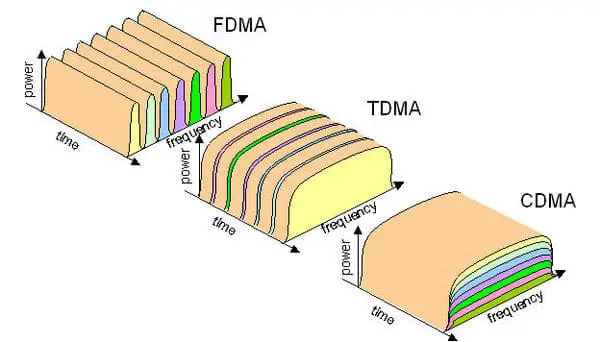CDMA, or Code Division Multiple Access, is a digital cellular phone technology that uses spread spectrum wireless networking technologies.
What is CDMA (Code Division Multiple Access)?
CDMA is a digital cellular phone technology that uses spread-spectrum wireless networking technologies. Code Division Multiple Access (CDMA) can be used to refer both to a type of digital cellular phone system and to the specific media access method used by this kind of cellular system. CDMA was developed by Qualcomm in 1993, and it was adopted and ratified by the Telecommunications Industry Association (TIA) as part of their Interim Standard 95.

How CDMA works
CDMA uses the spread spectrum wireless networking technology—first developed for military communication systems in the 1940s because it spreads its transmission over a large bandwidth, making it difficult to jam. Instead of dividing the available radio spectrum into a series of discrete channels using the older Time Division Multiple Access (TDMA) media access method, a CDMA channel occupies the entire available frequency band. The disadvantage is that CDMA is more complex to implement than TDMA digital cellular technologies.
The spread spectrum approach assigns a special digital code sequence to each user, and all users share the same broad portion of the radio frequency spectrum. Users thus share time and frequency resources on the available bandwidth, and their individual communications are channeled using these codes. The code tag then identifies the conversation to the transmission station.
All users in a cell that are transmitting at the same time are thus employing the same frequency band for their transmission.
CDMA combines voice and data into a single digital transmission at 9.6 Kbps, although speeds up to 19.2 Kbps per channel are possible by using error detection and correction techniques.
CDMA is a more secure cellular phone technology
Without knowledge of a conversation’s code tag, eavesdropping on CDMA conversations is difficult, making CDMA a more secure cellular phone technology than the Advanced Mobile Phone Service (AMPS) still used widely in the United States. CDMA also has a much higher call capacity than AMPS and is comparable to the Global System for Mobile Communications (GSM) standard for cellular communication used in Europe.